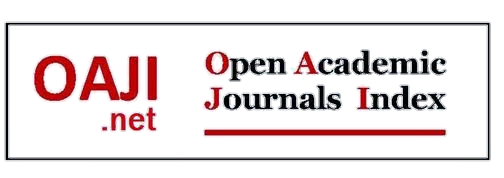USA Tariff Turmoil and Strategic Dilemmas 2025: Reshaping Business Model Innovation in China–Asean Trade – Evidence From Vietnamese Industries
1Chunyang Wei, 2Qinjie Shen
1Bangkok University, MBA
2Bansomdejchaopraya Rajabhat University, Digital Technology management for education, PhD
https://doi.org/10.47191/jefms/v8-i5-28
ABSTRACT:
The escalating bilateral tensions between the world`s two largest economies have entered a critical phase, marked by the recent decision of the United States to impose additional tariffs on Chinese imports. In response to these protectionist measures, China subsequently announced retaliatory trade restrictions, resulting in the global economy entering a new phase of uncertainty. This study examines how Vietnamese firms are strategically reshaping their business model innovation within the evolving US-China trade war and seizing the opportunities toward higher firm performance. Our findings indicate that regulation and surveillance, geopolitical issues and warfare, tariff volatility, customer purchase power, and political philosophy orientation have a significant impact on Vietnamese firms’ reshaping business model innovation and achieving higher firm performance amid the current international political and economic environment. Addressing the current US tariff turmoil is not the only way to drive business model innovation for Vietnamese companies, but they also need a series of important links in promoting the progress of scientific international management.
KEYWORDS:
Regulation and Surveillance, Geopolitical Issues & War, Tariff volatility, Customer Purchase Power, Political philosophy orientation, SEM method
REFERENCES:
1) Angela, H. Z., 2024. High Wire: How China regulates Big Tech and governs its economy. Oxford Academic.
2) Arner, D. W., Barberis, J. & Buckley, R. P., 2017. FinTech and RegTech: impact on regulators and banks. Journal of Bank Regulation, 20(1), pp.4-24.
3) Aslam, M., 2019. US-China trade disputes and its impact on ASEAN. Transnational Corporations Review, 11(4), pp.332-345.
4) Audty, A. & Meyer, L., 2024. Analyzing the effects of inflation on consumer purchasing behavior in emerging markets. International Journal of Economics, Commerce, and Management, 1(2), pp.21-23.
5) Benguria, F., Choi, J., Swenson, D. L. & Xu, M. J., 2022. Anxiety or pain? The impact of tariffs and uncertainty on Chinese firms in the trade war. Journal of International Economics, 137, 103608.
6) Bienstock, J. E., LaPerla, J. & Seaman, C., 2020. The impact of consumer purchasing power fluctuations on decision making as it relates to low involvement products, increase in income and consumer satisfaction. International Journal of Business Strategy, 20(1), Article 3.
7) Big News Network, 2025. Consumption downgrade is playing out in U.S. as tariffs backfire, 7 April.
8) Bloomberg, 2025. US and Vietnam reach agreement on non-tariff barriers, 10 April.
9) Boer, L. & Rieth, M., 2024. The macroeconomic consequences of import tariffs and trade policy uncertainty. International Monetary Fund.
10) Böhme, R., Christin, N., Edelman, B. & Moore, T., 2015. Bitcoin: Economics, technology, and governance. Journal of Economic Perspectives, 29(2), pp.213-238.
11) Bown, C. P. & Kolb, M., 2019. Trump’s trade war timeline: An up-to-date guide. Peterson Institute for International Economics.
12) Bown, C. P. & Kolb, M., 2022. Trump’s trade war timeline: An up-to-date guide.
13) Chen, X., 2021. US–China trade disputes and its impact on ASEAN: A regional value chain perspective. Journal of Asian Economics, 74, pp.101349.
14) Chia, Y., 2023. Is US trade policy reshaping global supply chains? Journal of International Trade Policy, 18(2), pp.145–160.
15) Dan, C., Pengcheng, X., Fuyuan, J. & Jin, G., 2022. A systematic review of current status and trends of mega-infrastructure projects. Ain Shams Engineering Journal.
16) Fan, D., Zhou, Y., Yeung, A. C., Lo, C. K. & Tang, C., 2022. Impact of the US–China trade war on the operating performance of US firms: The role of outsourcing and supply base complexity. Journal of Operations Management, 68(8), pp.928-962.
17) Foss, N. J. & Saebi, T., 2017. Fifteen years of research on business model innovation: How far have we come, and where should we go? Journal of Management, 43(1), pp.200-227.
18) Ghemawat, P., 2007. Redefining global strategy: Crossing borders in a world where differences still matter. Harvard Business School Press.
19) Hailiang, G., 2021. The process and logic of China's socialist market economy from mechanism to system. International Critical Thought.
20) Halim, H., Astuty, P. & Hubeis, M., 2022. Effect of inflation, consumption credit on purchase power of the community. International Research Journal of Management, IT and Social Sciences, 9(2), pp.226-234.
21) Hillman, A. J., Zardkoohi, A. & Bierman, L., 1999. Political strategies and firm performance: Indications of firm-specific benefits from personal service in the U.S. government. Strategic Management Journal, 20(1), pp.67-81.
22) Hofstede, G., 2001. Culture’s consequences: Comparing values, behaviors, institutions, and organizations across nations. 2nd ed. Sage Publications.
23) Hoque, M. E., Sahabuddin, M. & Bilgili, F., 2024. Volatility interconnectedness among financial and geopolitical markets: Evidence from COVID-19 and Ukraine-Russia crises. Economic Analysis and Policy, 82, pp.303-320.
24) House, R. J., Hanges, P. J., Javidan, M., Dorfman, P. W. & Gupta, V., 2004. Culture, leadership, and organizations: The GLOBE study of 62 societies. Sage Publications.
25) Investopedia Team, 2024. What’s the difference between the income effect and the substitution effect? Investopedia, 11 November.
26) Jamal, I. H., 2012. The impact of business regulatory reforms on economic growth. Journal of The Japanese and International Economies.
27) Kaytaz, M. & Gul, M. C., 2014. Consumer response to economic crisis and lessons for marketers: The Turkish experience. Journal of Business Research, 67(1), pp.2701-2706.
28) Li, M., Balistreri, E. J. & Zhang, W., 2020. The US–China trade war: Tariff data and general equilibrium analysis. Journal of Asian Economics, 69, 101216.
29) Li, Y., 2024. The nexus between local government debt risk, real estate sector, and financial stability. Finance Research Letters.
30) Liu, K., 2023. Cross-Strait Relations Between Taiwan and Mainland China: The Economic Imbalance and its Implications. China Report, 59(2), pp.133-153.
31) Marquis, C. & Raynard, M., 2015. Institutional strategies in emerging markets. Academy of Management Annals, 9(1), pp.291-335.
32) Peng, M. W. & Luo, Y., 2000. Managerial ties and firm performance in a transition economy: The nature of a micro-macro link. Academy of Management Journal, 43(3), pp.486-501.
33) PwC, 2024. Asia-Pacific Consumer Insights Survey 2024: Vietnam highlights.
34) Reuters, 2025. US hikes tariffs on Chinese imports to 125%, 9 April.
35) Sai, N. J., Debashish, G., Sangjukta, D., Manjesh, K. & Chandan, K., 2024. A comprehensive study of building materials and bricks for residential construction. Construction and Building Materials.
36) Schinasi, G. & Smith, T., 2001. Financial implications of the shrinking supply of US treasury securities.
37) Taneja, S., Pryor, M. G. & Hayek, M., 2016. Leaping innovation barriers to small business longevity. Journal of Business Strategy, 37(3), pp.44-51.
38) Toygar, A. & Yildirim, U., 2023. Examining the effects of the Russia-Ukraine conflict on global supply chains. In: Handbook of research on war policies, strategies, and cyber wars. IGI Global, pp.184-199.
39) Tran, Q. T., 2019. Economic policy uncertainty and corporate risk-taking: International evidence. Journal of Multinational Financial Management, 52, 100605.
40) Wang, P., Zhang, Z., Zeng, Y., Yang, S. & Tang, X., 2021. The effect of technology innovation on corporate sustainability in Chinese renewable energy companies. Frontiers in Energy Research, 9, 638459.
41) Zeliang, X., 2025. Real estate market regulation and local government debt risk. Finance Research Letters.
















